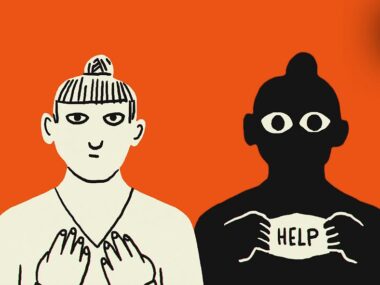Written by Heath McCoy
Make no mistake, the phenomenon coined “Taylormania” by the press is real. Astonishingly real. With the launch of this year’s Eras Tour — wherein Taylor Swift performs for over three hours a night, with sets dedicated to each phase of her career — Swift’s popularity has reached a fever pitch. The tour has broken records, including the most tickets sold in a day by an artist (US$2.4 million) and some concert industry experts have predicted it will be the largest-grossing concert tour ever. Swift also swiftly (sorry) spun the tour into a concert film, causing a ripple effect in release dates across the film industry. Taylor Swift: The Eras Tour dominated the box office on its opening Oct. 13 weekend, earning an estimated US$126 million, the biggest opening weekend ever for a concert film. All told, the tour is projected to generate US$5 billion in consumer spending, including merchandise sales and the money fans will spend on hotels, food and transportation.
So, what accounts for the mania? What is it about this 33-year-old country singer-turned-pop star that has generated such mass devotion?
Cutting through all the media noise and music industry hype is the powerful bond Swift’s songs have forged with her core audience, says Dr. Dawn Johnston, MA’99, PhD’05, professor of communication, media and film in the Faculty of Arts at the University of Calgary. “She’s telling stories that are really relatable, particularly to teenage girls, or former teenage girls,” says Johnston. “Millions of fans have grown up with her. Many of them became fans when they were around her age, and they’ve gone through a lot of important milestones in their lives at roughly the same time she has.”
“Her willingness to take on the establishment and do the work that needed to be done to preserve her rights and reputation was impressive. Especially because women who take on men in power are often punished socially for doing so.”
Indeed, Swift’s vast song catalogue reads like an extensive open diary, chronicling the affairs of her heart with stark honesty, running the gamut from first loves and painful breakups to exhilarating on-again, off-again romances and songs of rivalry and backstabbing between women. But Swift has also come to be regarded by her “Swifties,” as her most ardent fans are dubbed, as a figurehead of feminist empowerment. “I’m so sick of running as fast as I can, wondering if I’d get there quicker if I was a man,” she sings on The Man. In a similar vein, she takes on double standards in Nothing New (“They tell you while you’re young, girls go out and have your fun, then they hunt and slay the ones who actually do it.”) On the dreamy synth-pop single, Midnight Rain, she leaves a sturdy, loving relationship behind in favour of her career ambitions.
“It’s noteworthy that Taylor Swift’s emergence as a figure of female empowerment has been gradual,” says Johnston. “She has grown up as a feminist in the public eye, making the same kinds of missteps and gaffes that many of us make as we are coming into our feminist identities. Her fans have grown up with her and have seen her ability to learn and grow in her feminism.”
A major factor in Swift’s ascent as a champion of feminism has been in her willingness to stand up to men of power who have tried to bully or control her. This started with her long-running feud with Kanye West that began when he interrupted her acceptance speech on live television for Video of the Year at the 2009 MTV Awards. It continues today, bolder than ever, in her current battle with the exploitive, predominantly male-run music industry itself. Swift has repeatedly been seen as a proverbial David — or, rather, “Davida” — taking down patriarchal Goliaths.
Swift went to war with her former record label, Big Machine Records, and music executive Scooter Braun. Braun purchased the company in 2019, becoming the owner of all of Swift’s master recordings, music videos and artworks copyrighted by Big Machine, including those of her first six studio albums. Swift claimed that she had been trying to purchase her masters, but Big Machine would only sell them to her if she signed a new six-album deal with the company. She also protested that, under Braun, Big Machine was using her music without her approval while blocking her from using it for her own ends, such as her documentary, Miss Americana.
While, historically, artists’ re-recordings of old songs rarely sell as well as the originals, all of the Taylor’s Version re-recordings so far have topped the Billboard charts, once again proving her fans’ devotion.
But Swift found a loophole. Even though Braun owned her masters, she retained the publishing rights to her recordings as the main songwriter on all of them. This allowed her to re-record those albums in full, which she has done in earnest, releasing three “Taylor’s Version” re-recordings, including, thus far, Fearless, Red and Speak Now (with a fourth, 1989, on the way) giving her complete ownership of them. While, historically, artists’ re-recordings of old songs rarely sell as well as the originals (for example, Bill Haley recorded Rock Around the Clock four times, but only his first rendition hit No. 1), all of the Taylor’s Version re-recordings so far have topped the Billboard charts, once again proving her fans’ devotion.
“Her willingness to take on the establishment and do the work that needed to be done to preserve her rights and reputation was impressive,” says Johnston. “Especially because women who take on men in power are often punished socially for doing so.”
Swift is also loved by her fans for taking aim in her songs at the men she’s been linked to romantically. Woe to Swift’s former love interests should their relationships end badly because they’ve often been lambasted as scoundrels in her songs, including the high-profile celebrity likes of John Mayer, Jake Gyllenhaal, Joe Jonas and Harry Styles.
These relationships have, of course, been the subject of much negative attention in the media, and Swift hasn’t backed down from any of it. “She’s not above baring her soul around the miserable public scrutiny she’s received in being a public figure while growing up,” says Johnston.
Swift references this harsh scrutiny in songs like Lavender Haze and Peace about the impact it’s had on her relationships. As she sings in New Romantics: “Baby, I could build a castle out of all the bricks they’ve thrown at me.”
Johnston adds: “If the rest of us received that kind of scrutiny through our various affairs and breakups in life, we would all have stories to tell. She hasn’t been afraid to be critical of the media and the public scrutiny they’ve subjected her to. Her fans admire that.”
Johnston counts herself among those fans. On a recent road trip, she listened to Swift’s re-recorded albums in their entirety. “I was fascinated listening to these new recordings of her old music,” Johnston says. “She’s older now, her voice is more mature, and I wondered how it would translate on these songs she recorded in her youth. I have to say, I heard more of a gravitas in those early songs than I ever dreamed possible. I really loved hearing that.”




